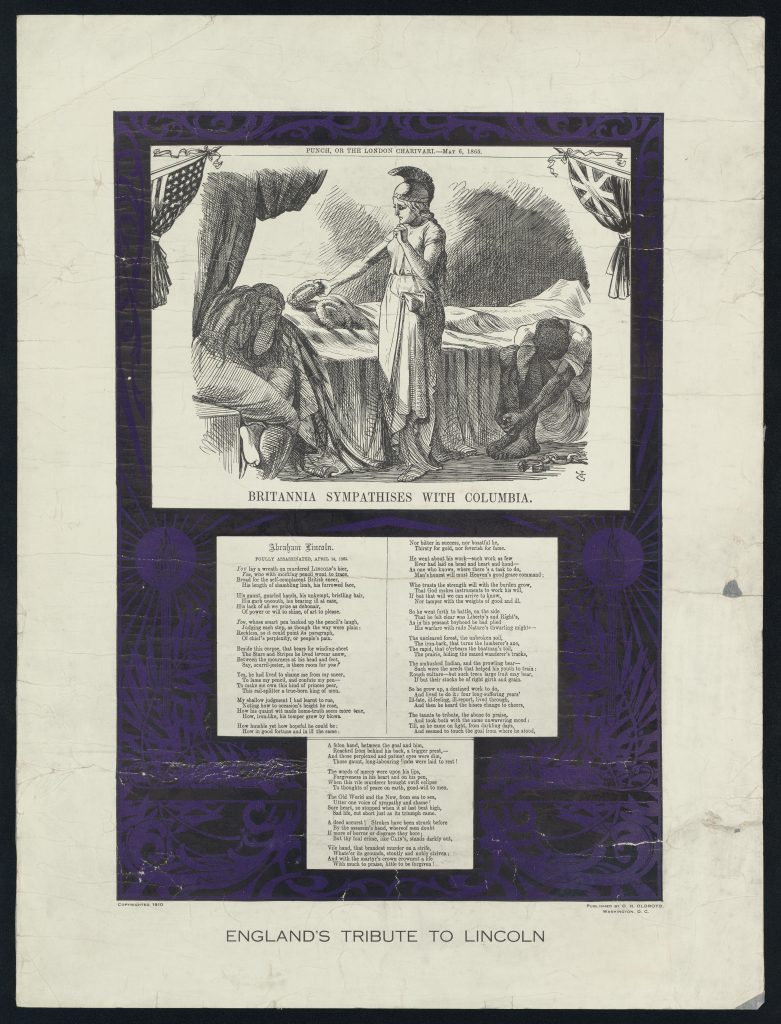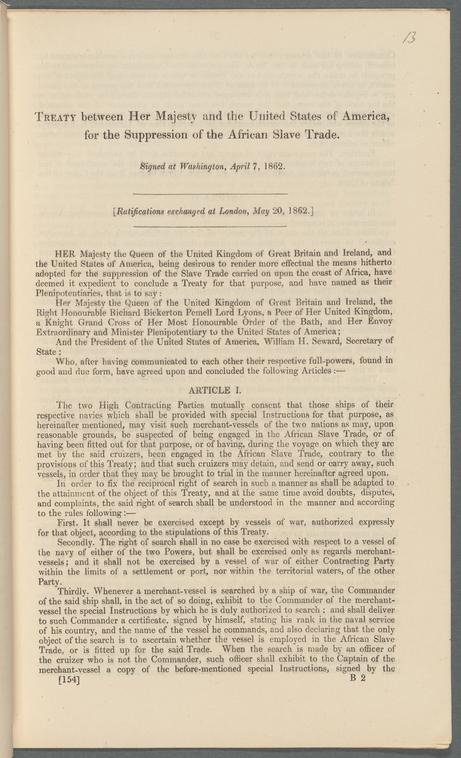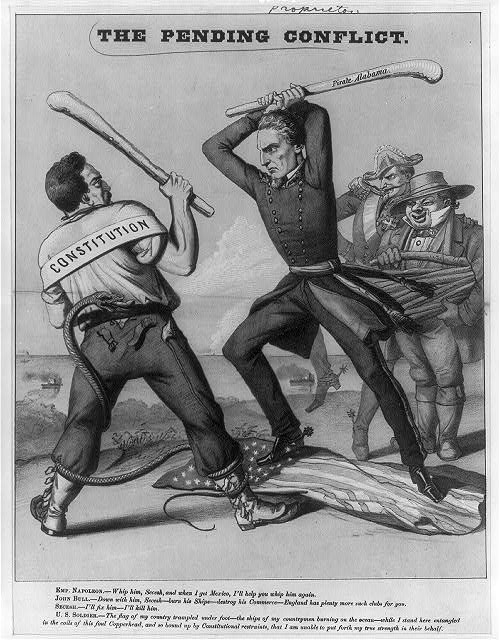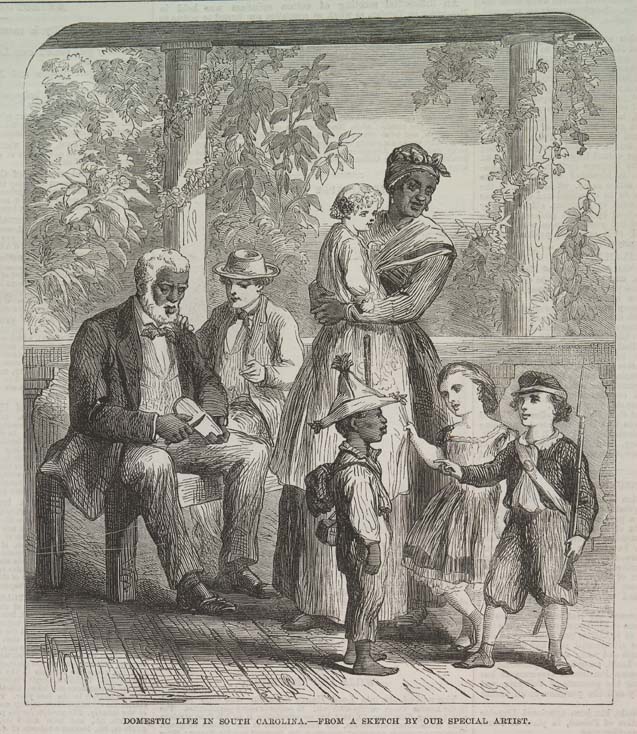The materials that contribute to modern interpretation and analysis of Civil War diplomacy and the development of Anglo-American relations are centered in documentary and image-based sources. Preserved letters, memoirs and articles convey the ideas and issues that surrounded their authors, and such sources relating to the Civil War can be found available to view in libraries and archives in both the United States and the United Kingdom. Access to materials online is not a guarantee, as their digitization is not always possible.
Below are a few particular examples of materials that shed light on Anglo-American discourse and issues, originating from diverse backgrounds.
England’s Tribute to Lincoln and ‘Abraham Lincoln foully assassinated’

The most prominent face of the Union in imagery both at home and internationally, depictions of the 16th president reflected a wide range of attitudes towards both the man and the North’s efforts in the war. Abraham Lincoln garnered both praise and criticism for his approach to dealing with issues such as secession and slavery, attitudes to each shaping how he was portrayed in contemporary media. His iconic appearance, as well as mannerisms deriving from his frontier background, provided inspiration for artists in caricaturing the president in satire and criticism.
However, with Lincoln’s assassination in 1865, his role in emancipation and reunification rose to greater prominence. Even the London magazine Punch, one of those publications that had often presented satirical critique of Lincoln and the Civil War, contributed to the tributes that honored the late president.
The Lyons-Seward Treaty of 1862

From late November, 1861, through to the New Year, the U.S. and England were embroiled in an event that drew them closest to war with one another – the Trent Affair. With the resolution of matters surrounding the Affair before the situation could escalate further, Northern officials saw an opportunity to repair the damage caused to their relations with England. To this end, Sec. Seward took steps in 1862 to foster cooperation on an issue that both nations aligned upon: the Atlantic slave trade.
Despite British efforts to eradicate trans-Atlantic smuggling of slaves from Africa, the practice had endured. Working with Lord Lyons, who in turn coordinated with Earl Russell, Seward crafted an agreement that allowed the patrol ships of both nations to intercept merchant vessels belonging to the other, specifically those suspected of smuggling slaves.
The Pending Conflict

Northern suspicions concerning European governments and possible sympathies for the Southern cause, or else, hostility towards the United States, were depicted in published prints and political cartoons throughout the war. Works such as the one above reflect the view that foreign entities were prepared to aid the South if it convenience them. This 1863 example addresses several issues, including Emperor Napoleon III of France’s invasion of Mexico, as well as the role of English shipyards in the production of vessels for the Confederacy, including the raider Alabama. Standing behind the secessionist soldier, the figures of Napoleon III and John Bull (England) provide promises of support in their war to defeat the North.
Domestic Life in South Carolina

Abolitionist sentiment had, in the late 18th and early 19th century, arisen and grown in England. This in turn led to coordination with other groups around the Atlantic world, together forming international networks to communicate and advocate their cause. While abolition in the Empire was achieved by the 1840s, slavery continued to persist in the United States, the resulting fractures of which were evident to foreign onlookers.
While public interest in abolition remained by the outbreak of the Civil War, the fires of earlier sentiment had begun to dim. While accounts and novels depicting the evils of slavery remained popular with British reading audiences, another image of the South was cultivated. The scene above, illustrated for the Illustrated London Times in 1863, is reflective of arguments that sought to focus upon the gentility of Southern antebellum society. Generalizations of greater racial harmony in the South contrasted with similar descriptions of racial antagonism in Northern cities, described by British travelers such as Viscount Garnet Wolseley or London Times reporter William Howard Russell.